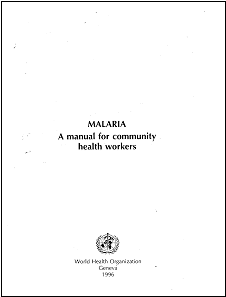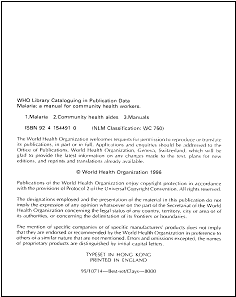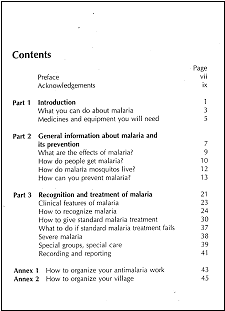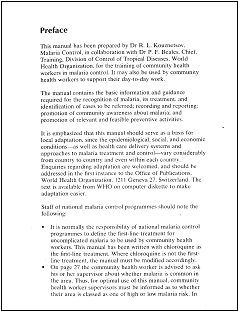5.1 Classifying materials
Classifying materials means identifying each material according
to its subject, so that materials on similar subjects can be
grouped together on the shelves. Classification schemes help
to:
- direct users to the material that they need
- enable users to find related materials
- enable staff to know where to put materials.
Materials in small resource centres are sometimes classified using
different colours to represent different subjects - different coloured
dots are stuck onto the materials to indicate the subject. More
usually, materials are classified using a combination of numbers
and letters. The numbers and letters represent the main subject
areas and subsidiary (other) subjects covered by the material.
Whatever the size of the resource centre, materials need to
be classified in some way. A very small resource centre only
needs a simple classification scheme, using a few broad subject
headings, and a separate section on the shelves for general
reference materials.
5.1.1 Choosing a classification scheme
There are two main types of classification scheme: universal
and specialised. Universal classification schemes cover all
subject areas. They include Universal Decimal Classification
(UDC), Dewey, and Library of Congress. Specialised classification
schemes include the National Library of Medicine (NLM). This
is designed for medical libraries. It covers very clinical issues,
and therefore does not cover all the areas covered by resource
centres focusing on health or disability issues.
Resource centres that specialise in a particular subject often
develop their own specialised classification scheme, such as
the Healthlink Worldwide Primary Health Care Classification
Scheme, and the Southern African HIV/AIDS Classification Scheme
of the Southern African Network of AIDS Service Organisations
(SANASO).
A suitable classification scheme can usually be identified
by contacting the national public library service, library association
or a university library. If the resource centre specialises
in primary health care or disability issues in developing countries,
it would be worth contacting Healthlink Worldwide.
5.1.2 How to classify materials
To classify materials, ask yourself:
1. Is the material about a particular subject
or subjects (for example, is it a book about health education
or a video about counselling?) or is it more general (for example,
is it a directory or atlas?) Find out by looking at the following:
- for books and other print materials: the title page, list
of contents and introduction, preface or foreword
- for audiovisual materials: the title, description and any
accompanying materials, and by watching a video, listening
to an audio cassette, or looking at slides.
2. If the material is about a subject, does it
deal with one subject or several subjects?
3. If the material deals with one subject,
use that subject to classify it. Find the subject in the classification
scheme and assign the corresponding classification number to
the material.
4. If the material deals with several subjects,
can all these subjects be regarded as part of one broad subject?
If so, use the broad subject to classify the material.
5. If the material deals with several subjects
that are not part of one broader subject, use the subject that
is either most thoroughly covered by the material, or of main
interest to users of the resource centre, to classify the material.
6. Check that you are classifying materials
on similar subjects consistently, by looking at several materials
to which you have assigned the same classification number. You
can do this by going to the shelves and looking at the materials
that are already there.
7. If the material is for general reference
(such as a dictionary or atlas), you do not need to classify
it. Place it in a section of the resource centre for general
reference materials.
8. If you have a lot of materials with the
same classification number, you can distinguish them by putting
the first three letters of the author’s name after the
classification number. If there is no author, use the first
three letters of the title. For audiovisual materials, use the
producer’s name.
If the resource centre collection expands into new subject areas
(for example, emerging diseases such as hypertension), you may
need to add new subjects to your classification scheme. Most
classification schemes are designed to make it easy to add new
subjects when necessary. Details of how to extend the classification
scheme are included in Section 5.2.2.




next: 5.2 Developing a classification
scheme
top of page

